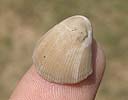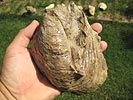|
The Geology of Texas - Vol. 1
FORT WORTH FORMATION
Nomenclature. -- In early literature, the term Fort Worth lime-stone
was used as a synonym of Washita (= Georgetown) limestone. In 1891, Hill
(772, p. 516) restricted the term to apply to the limestone above the Duck
Creek and below the Denison beds. The term is still used in that sense.
The localities mentioned include, near Fort Worth, the bluff of Trinity
River just north of the Court-house, the quarries near the Union depot,
the Texas and Pacific Railway cuts in the city, and the railway cut at
Hodge station, 3 miles north of Fort Worth. Some of these localities are
now badly over washed and overgrown.
Facies. Neritic, mostly thin- to medium-bedded limestone, with a
smaller amount of interbedded marl, on the outcrop.
Areal outcrop; local sections. -- The Fort Worth formation is
peculiar in retaining a nearly uniform thickness of 30 feet over much of
its outcrop. In southern Oklahoma, the Duck Creek and Fort Worth
formations together were called Caddo limestone by Taff. In Marshall
County. Oklahoma 174. pp. 33-35). the Fort Worth consists of about 40 feet
of hard, cream-colored limestone, lithologically somewhat like the Duck
Creek limestones, alternating with thinner strata of limy marl. The lower
10 to 15 feet is com-posed of alternating beds of yellowish-white
limestone and grayish to blue clay-marl. In the middle 10 to 15 feet
thicker marl strata alternate with thinner limestone seams. The upper 10
feet is pre-dominantly limestone, separated by thin marl seams. In Grayson
County, Bullard (177, p. 29) records 45 to 50 feet of Fort Worth, the
lower 15 feet being alternate layers 1 to 3 feet thick, of shale, or marl
and limestone. The next 19 feet consists of clay-shale containing thin
limy seams, with the following recorded fossils; Pervinquieria
leonensis (Conrad), Holaster simplex, and Pecten. The
upper 19 feet is thicker limestone strata alternating with subordinate
marl beds; it contains, according to Bullard, Exogyra americana
Marcou, Macraster elegans (Shumard), Holaster simplex
Shumard, Pervinquieria leonensis (Conrad), and Gryphaea
washitaensis Hill. The Tarrant County section of Fort Worth limestone
is 30 to 35 feet thick. The beds are uneven and lenticular, and the
limestones grade into the marls by a flaky transition zone. The limy
strata differ from Duck Creek limes in being generally a foot or less
thick, harder, and more regularly alternating. The soil weathers into a
rolling, untimbered blackland prairie suitable for grazing. The upper part
of the formation is locally marly, and contains abundant fossils, such as Macraster
pseudoelegans, M. texanus, M. aguilerae, M. nodopyga,
Holaster simplex, the rare but widespread Washitaster longisulcus, Exogyra
americana, Pervinquieria maxima, and other species. From Bell
County southwards, the Fort Worth is well compacted with the other members
of the Georgetown limestone. It is overlain by the attenuated,
soft-weathering Denton shell marl, a thin, persistent, soft ledge
containing many Gryphaea washitaensis, Alectryonia cf. carinata
and Macraster (several species), which weathers to a distinct bench
and serves to separate the halves of the Georgetown in the southern
section. Here the Fort Worth is a chalky, argillaceous, nodular limestone,
dark to light bluish-gray on fresh exposure, whitish and somewhat
disintegrated on prolonged exposure. It generally forms an upland prairie,
bordered to the west by the narrow Duck Creek outcrop, and in stream cuts,
it forms small bluffs.
Paleontology and zonation. -- The Fort Worth probably represents
only a brief interval in the zonation, and at present is assigned to the
sole zone of Pervinquieria maxima, which in the Fort Worth section
extends down into the top of the Duck Creek marl. After the explosive
appearance of Pervinquieria in the basal Duck Creek, the genus
became less abundant, but is represented in the Fort Worth limestone by
several distinct lines, which have not been yet sufficiently studied,
among them the groups of P. nodosa, P. kiliani, P.
trinodosa, and some new species. Prohysteroceras persists from
the Duck Creek to at least the Weno. Macraster has a thin zone in
the Duck Creek, and reaches a considerable development, with several
species, in the Fort Worth-Denton. Washitaster, so far as now
known, first appears in the Fort Worth. Several rarities occur in the Fort
Worth: Turrilitoides n. sp., a genus like Ancyloceras but
much larger (Tropaeum-like), and micromorphs. The best guide
fossils are Pervinquieria maxima and Exogyra americana,
which occur in abundance.
|
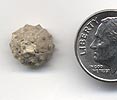
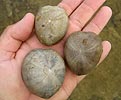
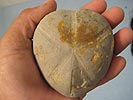
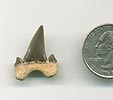
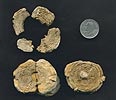
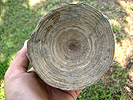 [+]
[+]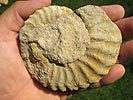
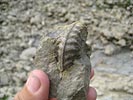
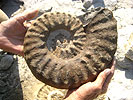 [+]
[+]